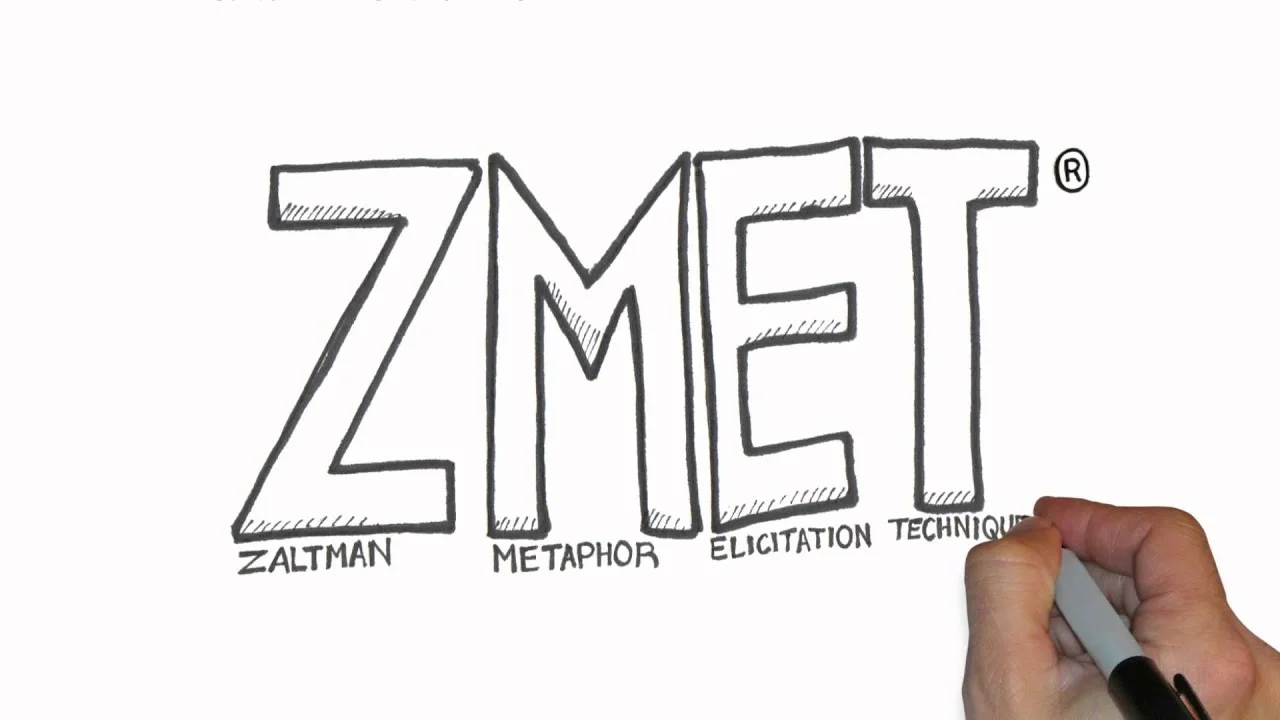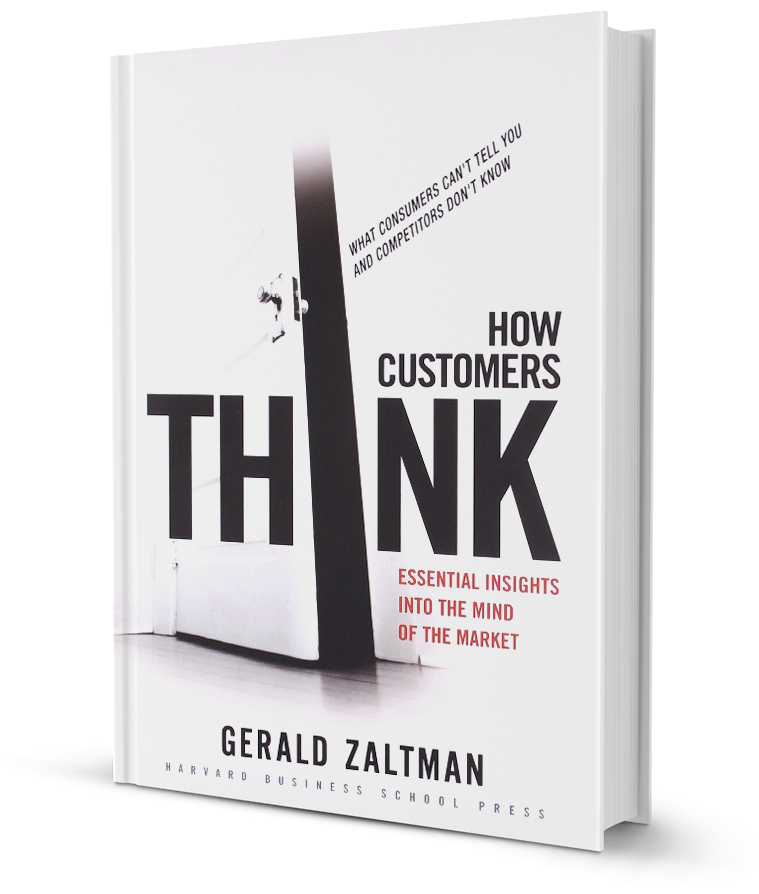As someone who has conducted hundreds of market research and new product development projects, the challenge of believing what consumers tell us is often a gamble. Too often consumers tell us they love our new product concept but then they never buy it. The graveyard of new products is littered among countless research projects that “validated” how much customers love the new offering. As marketing professionals we need to find better ways to understand the complex world of consumer behavior.
Gerald Zaltman
I recently finished a great book by Gerald Zaltman, How Customers Think: Essential Insights into the Mind of the Market. Zaltman is a professor at Harvard University and is a leading authority on marketing, market research, and behavior. The book focuses on Zaltman’s research technique, Zaltman Metaphor Elicitation Technique (ZMET) which is used to understand brand image. Marketing professionals can gain new insights into consumer behavior beyond traditional methods of superficial research (e.g., questionnaires, focus groups) using metaphors to elicit deep insights.
ZMET 101
ZMET is a hybrid methodology grounded in various domains, including verbal and nonverbal communication, visual sociology, visual anthropology, literary criticism, semiotics, mental imagery, cognitive neuroscience and phototherapy. The goal of ZMET is to gather metaphors and constructs and understand the relationship among them in relation to the research topic (e.g., brand, product). These metaphors guide people’s thinking on a specific topic (e.g., brand awareness). Often consumer’s thoughts and opinions are unconscious and cannot be expressed verbally (at least initially). ZMET provides a valuable insight into the consumer’s mind to identify true behaviors in relation to a brand or product. ZMET helps identify what really matters to consumers, allowing for effective marketing communications.
A metaphor is a representation of knowledge. It is a figure of speech in which a word or phrase is applied to an object or action to which it is not literally applicable. For example, I am buried in debt or My office is like an icebox or Bill is a night owl.
Brand Imagery
When customers think of brands, they often do this via imagery. For marketing professionals, using metaphors in advertising (which aligns with prospective customer metaphors) will make it much easier for a consumer to align with the brand or product. Researchers feel that metaphors are the most basic method of thought and communication. Thus the need to understand how consumers think in terms of metaphors is critical to developing deep understanding of how they perceive brands or products. A word of caution, as a marketer you need clearly understand the customer’s metaphors and their meanings in various contexts to ensure you use the correct metaphor in your marketing.
The Origins of ZMET
Zaltman developed ZMET after traveling to Nepal in 1990. He gave locals cameras and asked them to document their lives through images. Zaltman noticed that in all the pictures the feet were left out. He realized that bare feet and old, worn shoes represent poverty; therefore, everyone did not include them in the pictures. This was done subconsciously.
Images have meaning that cannot be expressed with words. These hidden emotional intentions are images framed with deep metaphors. The goal of eliciting metaphors from consumers is to understand the hidden meanings that make consumers tick. You want to obtain insights that determine real consumer behavior and thinking patterns which can be translated into effective marketing communications.
Applying ZMET
A ZMET project typically consists of about 15-20 individuals. They are given homework regarding the research topic (e.g., brand, product). The consumer collects photos and pictures of what the topic means to them. The benefit of having the individual choose the pictures themselves reduces any bias (i.e., the researcher does not choose the source of the photos). They bring in these pictures and are interviewed, individually, for approximately 2 hours. The interviewer guides the conversation to gather deep insights how the images relate to the customer’s perception of the topic. A digital collage of the images is developed. The collage and interview transcripts are analyzed and metaphors are identified.
Conclusion
Zaltman has identified seven universal metaphors;
balance
transformation
journey
container
connection
resource
control
These metaphors are consistent between different races, cultures, and ethnic groups. As most humans communicate non-verbally, using imagery to understand deep consumer insights is a powerful way to elicit competitive advantages. The next time you are planning a traditional research project, think about ZMET and how it can provide new insights to change how you communicate to your market. As Zaltman notes, researchers can obtain more impactful insights through approximately 15-25 one-on-one interviews than multiple focus groups.
“A lot goes on in our minds that we’re not aware of. Most of what influences what we say and do occurs below the level of awareness. That’s why we need new techniques: to get at hidden knowledge – to get at what people don’t know they know.” Gerald Zaltman
References
https://en.wikipedia.org/wiki/Zaltman_metaphor_elicitation_technique
http://acrwebsite.org/volumes/7644/volumes/v21/NA-21







